Berlin long gone – then/now
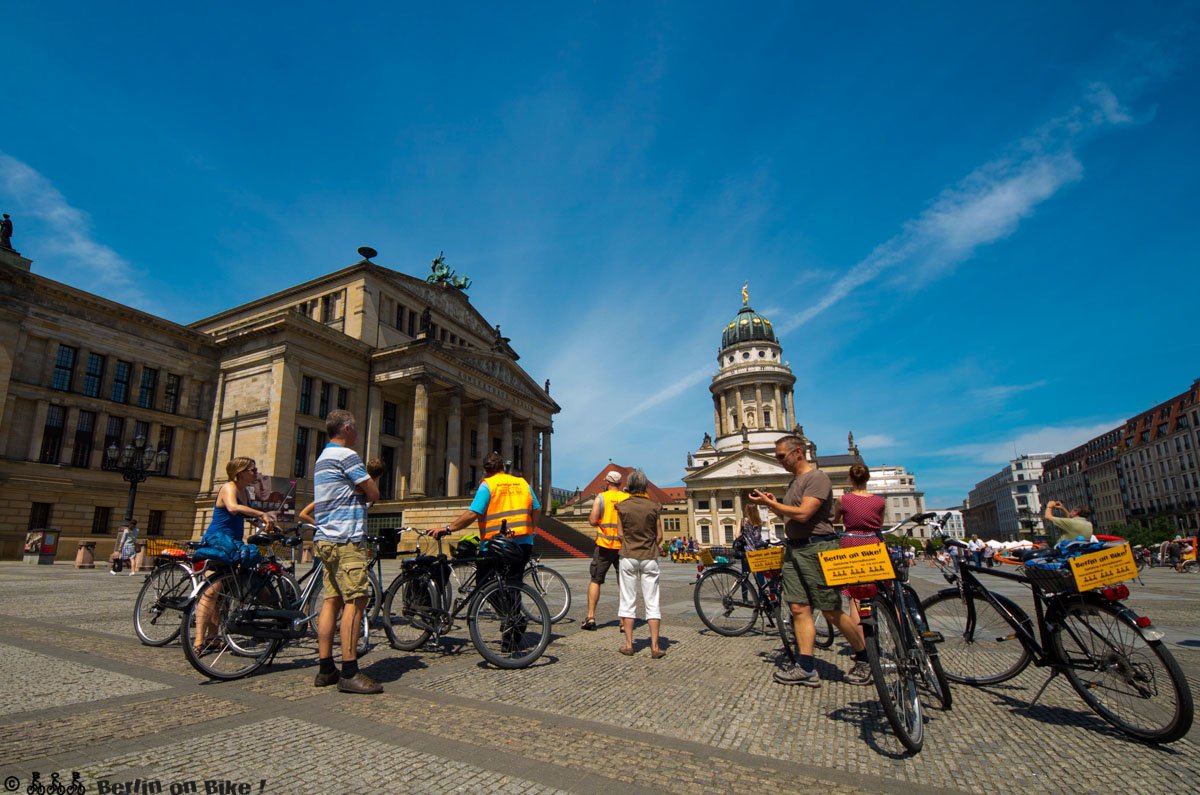
Berlin is everbecoming
It’s probably one of the most popular clichés about Berlin, right beside being a failed state and a cesspool of lazy anarchists; Berlin is the city that never is, but will always be becoming. Of course, that is more or less true of every big city. That being said, Berlin received more than its fair share of change over the last 100+ years. In this time Germany went from being an expansive, military monarchy to a democratic republic plagued by internal strife, to totalitarian murderous dictatorship, to being an occupied country, cut in two only to see a peaceful revolution 50 years later, that meant another change for people in the East, transitioning from a socialist planned economy with littly regard for the individual to what is called social mercantilism and a unified Germany with 82 million people. Each of these changes meant a change in what the ‘ruling class’ thought about the city and man’s place in it. They all needed visual markers of their rule and superiority and shaped Berlin in a unique way. Today Berlin is a city of many layers with history found on almost every corner, but much its former glory has been destroyed in the war. This article, that will be updated regularly aims to introduce you to some places and buildings that used to shape the city and her people. Mostly we will share then and now views with tiny smalltalk optimized tidbits of Berlin trivia, with which to impress your fellow Berlin lovers.
Instead of building a new blogpost for each of those comparisons, we will let this article grow whenever we publish a new one and a link to the Berlin bike tour that features the place.
#1 Gendarmenmarkt
A must-see on almost every classic sightseeing tour through Berlin, Gendarmenmarkt is often referred to as Berlin’s most beautiful plaza. While it is certainly very pictorial with its two baroque churches and the classicist concert hall that they embrace, we have our difficulties with superlatives and compairing places. Mark Brandenburg – the principality governed from Berlin, before our rulers became a bit megalomaniac and decided they needed to be kings and had to call themselves Prussia henceforth, was hit worse than most by the 30 Years War. Between 30 and 50% of the populace was either dead or fleeing and to get new folks as citizens the authorities invited fellow protestants from France who were outlawed and persecuted there at the end of the 18th century. To make room for them a new district was built; Friedrichstadt. You can easily spot it on a map by its highly regular grid of streets with Gendarmenmarkt in the center. It was the first planned expansion of the city. The name derives from a military unit that was posted there – or at least had their stables and trainings here: Les gents d’armes ~ men with arms, which later turned into a generic word to describe a local police man. Today two churches with symmetric decorative bell towers dominate the plaza and frame the concert hall. In December it hosts one the most popular X-mas markets and at some point it even played London in the Jackie Chan comedy, 80 days around the world.
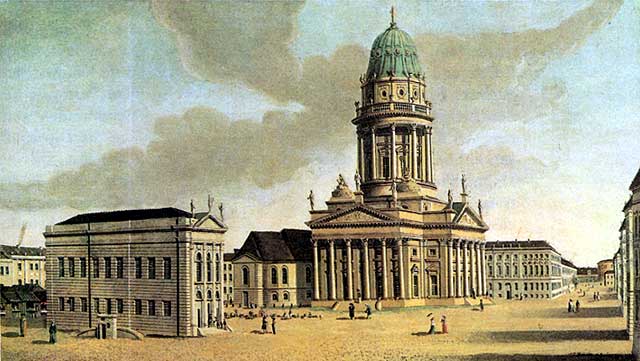
Traugott Fechhelm painted this view of Gendarmenmarkt in 1788 showing the old, much smaller theatre before it burned down and the French protestant church with its new tower/cupola
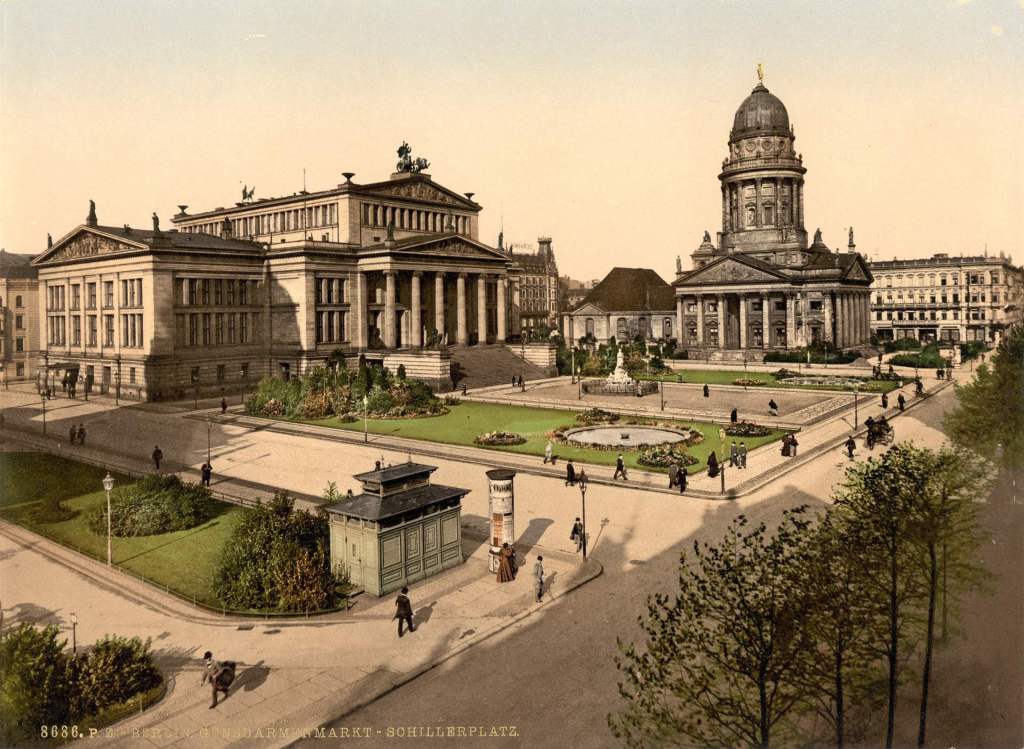
About 100 years later in 1900 it was named Schillerplatz, but looked pretty much like it does today with a few added green elements.
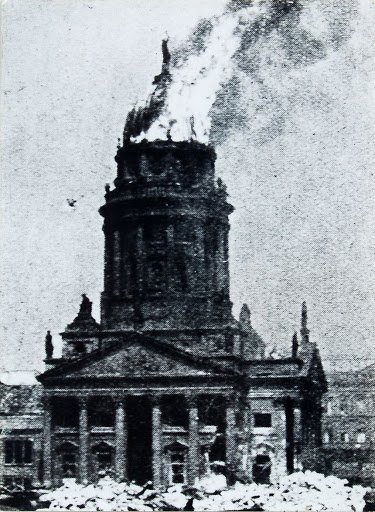
Sadly the church was hit in the last days of the war, and there wasn’t really anyone left to fight the fire.
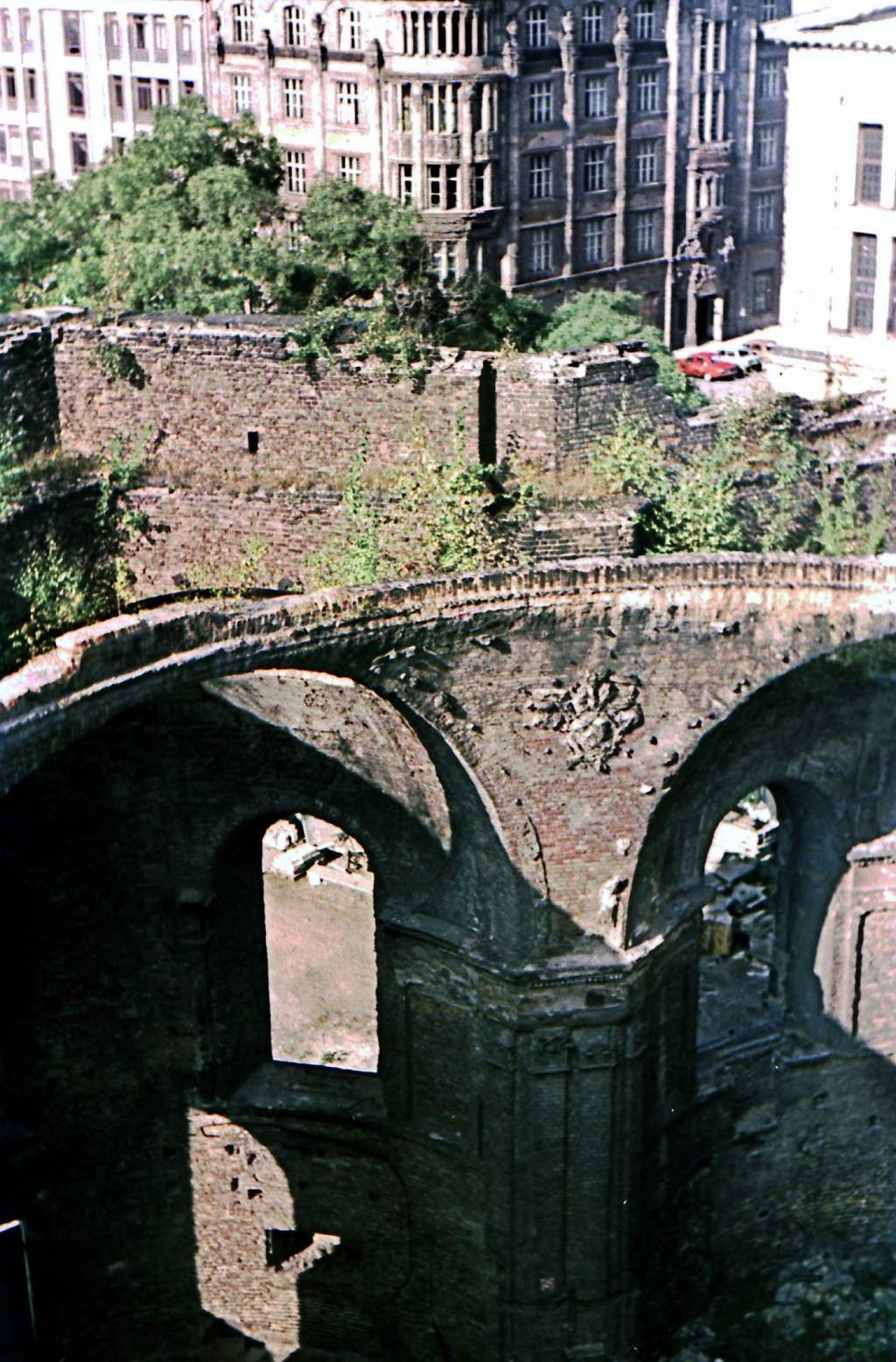
And it didn’t get any better after the war. It took until the 1980s to properly talk about renovating and reconstructing. (c)Blobelt
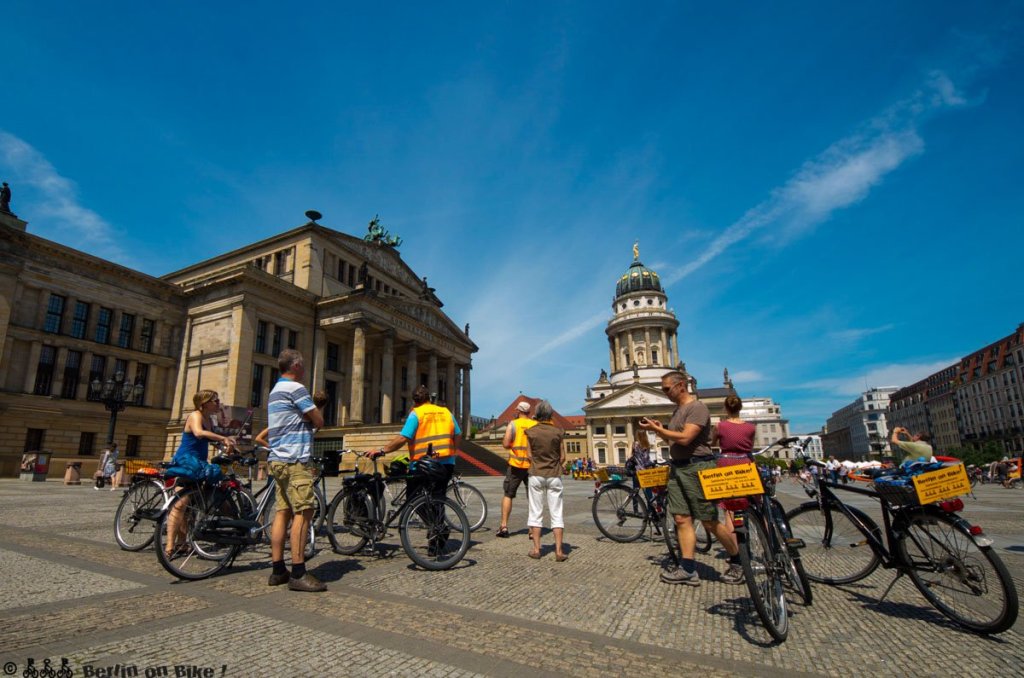
Today it’s a regular stop on our Berlin’s Best tour, that is not only beautiful but offers so many interesting aspects of our history to explore – migration, religion, trade – you name it.
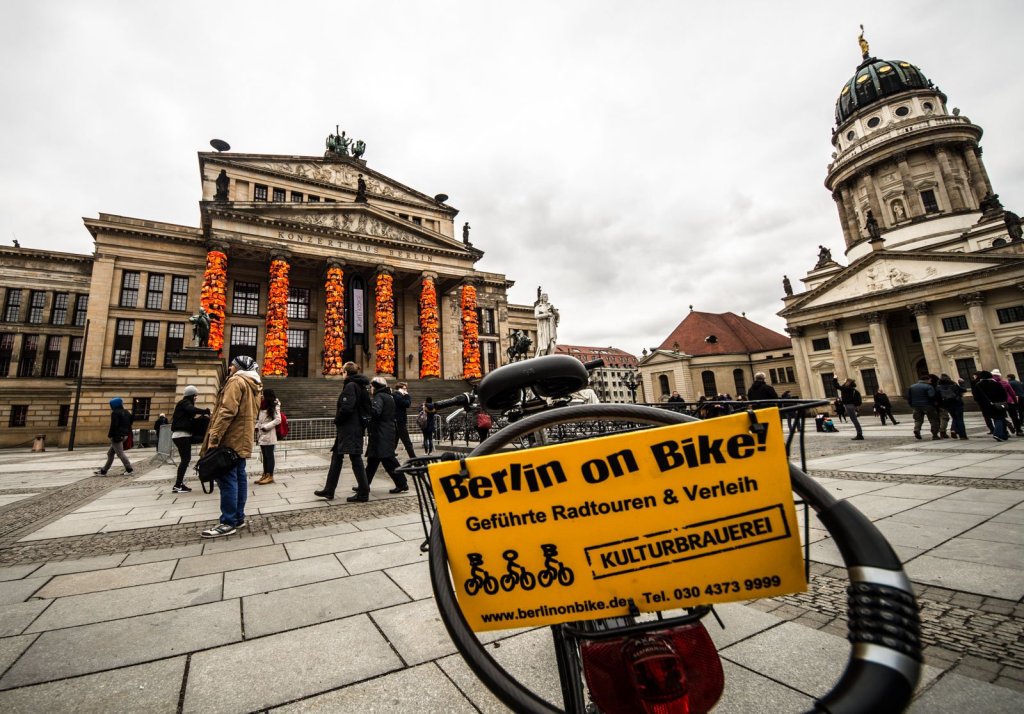
Around 2016 at a time when hundreds of thousands risked their lives in flimsy inflatables to get to Europe, the Chinese dissident artist Ai Wei Wei covered the facade of the concert hall in life-vests that he supposedly gathered on Greek beaches.

